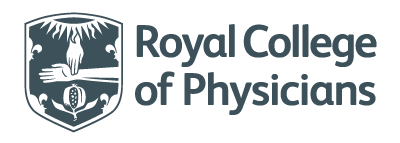Is that your arm or mine?

Lesson
A 45-year-old right-handed man presented complaining he had ‘lost possession’ of his right arm. He had woken to find what he thought was his wife's arm across his chest. Although he was aware this was unlikely because she was facing away from him in bed, he nevertheless moved the limb aside and fell asleep. An hour later he arose, but when he got to the bathroom in the semi-darkness, he was unable by touch alone to find the door handle with his right hand. When he looked for his hand he seemed to regain control over it, although the limb had no tactile sensation and still did not feel as if it belonged to him. He turned to tell his wife that his arm had ‘gone missing’, and was then aware that his speech was slurred. The symptoms resolved within the next hour, but he briefly re-experienced them the following day.
The patient was assessed on the day of his initial symptoms, when no abnormal neurological signs were detected. However, a detailed history revealed he had experienced left-sided neck pain for a few days prior to his unusual symptoms. Carotid ultrasonography revealed occlusion of the left carotid artery consistent with thrombus. Magnetic resonance imaging (MRI) confirmed dissection of the left carotid artery, with occlusion from the bifurcation to the intracranial portion (Fig 1). In addition, diffusion-weighted MRI revealed a small, acute infarct on the dorsal bank of the left superior temporal sulcus (STS). Screening blood tests, electrocardiography and echocardiography were all unremarkable. The patient was commenced on intravenous (iv) heparin and warfarin.
Magnetic resonance image scans revealed signal change within the left internal carotid artery (circled), consistent with thrombus secondary to dissection and an acute small infarct (arrowhead) in the left superior temporal sulcus.
One and a half years later, the patient still intermittently experiences the sensation that his right arm does not belong to him and ‘could equally belong to someone else’. This feeling occurs transiently approximately twice a week, especially at times of fatigue. Resolution is usually brought about by the patient moving his arm, looking at it or touching something cold. On two occasions he has also experienced difficulty releasing his right-hand grip.
Discussion
Disorders of body-part awareness such as this are often attributed to psychiatric illness but this case illustrates how important it is to consider organic causes.1 Asomatognosia is the term used to describe the condition where a patient reports a body part is missing or has disappeared from awareness. It is most frequently associated with brain lesions affecting the right parietal lobe1 but this case demonstrates that it may also occur with focal damage to the STS, an important area where information from different sensory modalities converge,2,3 including vision and touch.4 Damage to the STS in this case was clearly not sufficient to completely abolish conscious awareness of the limb though, presumably because somatosensory cortical regions were still intact.
The second key point here concerns the cause of this stroke. Carotid or vertebral artery dissections are responsible for 10–25% of all ischaemic strokes in young and middle-aged patients. Carotid dissection classically presents with the triad of pain in the head, face or neck, a partial Horner's syndrome and subsequent cerebral or retinal ischaemia, usually as a result of embolism.5 However, all three occurrences are evident in less than one third of patients, and might easily be missed if they are not specifically enquired about. In many centres, patients with acute carotid dissections are often anti-coagulated with iv heparin and then oral warfarin for three to six months to prevent thromboembolic complications, although there is an ongoing trial to compare the effects of aspirin versus anticoagulation. The presentation in this case shows how crucial it is to seek evidence of possible arterial dissection in patients presenting with potential cerebral ischaemic events.
Acknowledgments
This work was supported by the Wellcome Trust and the National Institute for Health Research (NIHR) Comprehensive Biomedical Research Centre (CBRC) at UCL/UCLH.
- Royal College of Physicians
References
- ↵
- Sierra M,
- Lopera F,
- Lambert MV,
- Phillips ML,
- David AS
- ↵
- Jones EG,
- Powell TP
- ↵
- ↵
- ↵
Article Tools
Citation Manager Formats
Related Articles
- No related articles found.
Cited By...
- No citing articles found.










